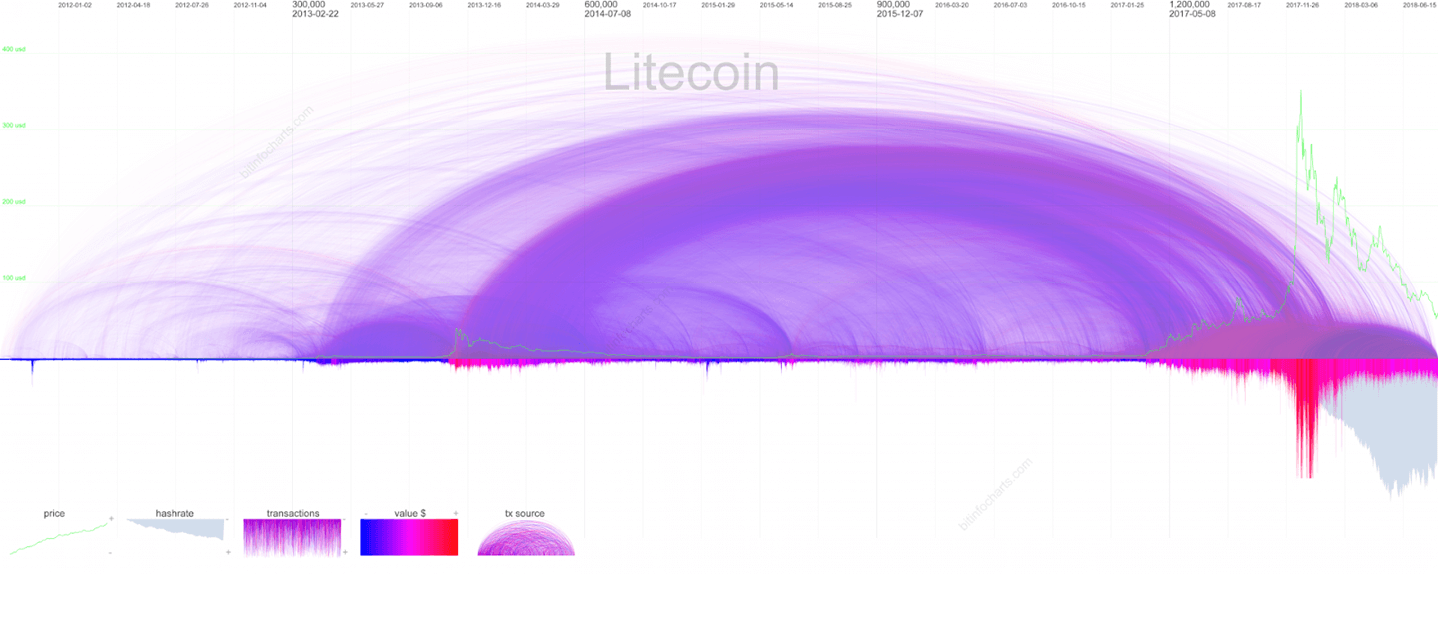In this guide, we answer the question: “What is Litecoin?”. Take a look to discover everything you need to know about the cryptocurrency.
Litecoin is the silver to Bitcoin’s gold
Created by a former Google employee and later CTO of Coinbase, Charlie Lee, Litecoin was one of the first serious altcoin projects developed with an actual purpose. While Bitcoin was seen as “gold” and a potential long-term store of value, Litecoin was created to be “silver” and used for everyday purposes. So, on October 7th 2011, Litecoin (LTC) was released via an open-source client on GitHub. The Litecoin Network went live on October 13th 2011, and was essentially a fork of the Bitcoin Core client with a different set of parameters.
In spite of its close relationship with Bitcoin, there are some key differences between the two cryptocurrencies, and one could argue they clearly serve alternative purposes.
- The Litecoin Network aims to process a block every 2.5 minutes, rather than Bitcoin’s 10 minutes. The developers claim that this allows Litecoin to have faster transaction confirmation.
- Litecoin uses Scrypt in its proof-of-work algorithm, a sequential memory-hard function requiring more memory than an algorithm which is not memory-hard.
Due to Litecoin’s use of the Scrypt algorithm, FPGA and ASIC devices made for mining Litecoin are harder to produce, meaning there are less large-scale mining farms at play with Litecoin. They hope this approach will keep mining collusion at bay.
|
Purpose of Token |
TPS |
Confirmation Time | Consensus Protocol |
| LTC to be used as a cryptocurrency
for quick payments |
56 | 150 seconds |
Scrypt |
Token – LTC
Litecoin’s goal is to be the decentralised money of the internet – free of censorship, permissionless, and open to anyone who wishes to join. They aim to offer private, secure, borderless payments for pennies – anywhere, anytime, and fully controlled by LTC holders. Litcoin offers the following:
- Real-time settlement (150 seconds)
- Cryptographically secure transactions
- Payments that move like email
- International reach with a single integration
- The best solution for micro-payments
- Quick and easy LTC payment channel integration
Currently, there is about 70% of the total LTC supply in circulation:
- Total supply: 84,000,000 LTC
- Circulating supply: 59,605,963 LTC (about 70% of the total supply)
Use cases
- Money of the internet: Litecoin can be used to make instant and borderless transactions anywhere in the world, through Litecoin’s decentralised, secure network
- Quick integration: Businesses can quickly integrate Litecoin payments with their systems using third-party vendors like Revolut, Wirex, Coinbase, or Coinify
- Points-of-sale: Businesses can deploy LTC points-of-sale to attract more customers and to give anyone an easy gateway for fiat-to-crypto or crypto-to-crypto payments
- General uses: Users can make near-free transactions to any account across the globe, with a 150-second settlement time
Technology
Litecoin uses a mining algorithm called Scrypt, which is more serialised than Bitcoin’s SHA-256. As such, parallelising mining calculations is not possible.
So, for example, let’s suppose we have two processes: A and B.
With Bitcoin, it will be possible for ASIC mining hardware to do A and B together at the same time by parallelising them. However, with Litecoin, you will need to do A and then B serially. If you try to parallelise them, the memory required becomes way too much too handle.
Scrypt is called a “memory-hard problem” since the main limiting factor isn’t the raw processing power but the memory. This is specifically the reason why parallelisation becomes an issue. Running 10 memory-hard processes in parallel requires 10 times more memory. Now, of course, there are devices available with tons of memory, and so normal people can compete on the Litecoin mining stage by buying simple day-to-day memory cards instead of super-specialised ASICs.
Scrypt has been deliberately designed to make sure that mining is accessible and democratised as much as possible. Recently, however, companies like Zeus and Flower Technology have managed to create Scrypt ASICs, which may, unfortunately, mean the demise of their dream of democratised mining. However, pound-for-pound, memory is way more expensive to produce than SHA-256 hashing chips, so bigger companies might just stick to mining Bitcoin.

Source: Bitinfo – Litecoin
Another major advantage of Litecoin is the faster block creation time. Since the time between blocks is so small, more and more miners get the opportunity to mine blocks and earn the mining rewards. What this means is that the mining rewards should theoretically be more well distributed with Litecoin and, by extension, it should be more decentralised.
In essence, Litecoin possesses Bitcoin’s features, but is “lighter” to carry and faster to transact. It’s founder, Charlie Lee, believes the goal and mission of Litecoin is to be a live testnet for Bitcoin, meaning that:
- Segwit (or segregated witnessing) has been activated before Bitcoin
- Litecoin has its own P2P payment channels (aka the Lightning Network)
- There are a number of side-chain implementations taking place to better connect Litecoin with Bitcoin’s blockchain, allowing better interoperability.
What next?
If you want to find out more about Litecoin, read our definitive series!
Disclaimer: The views and opinions expressed by the author should not be considered as financial advice. We do not give advice on financial products.
